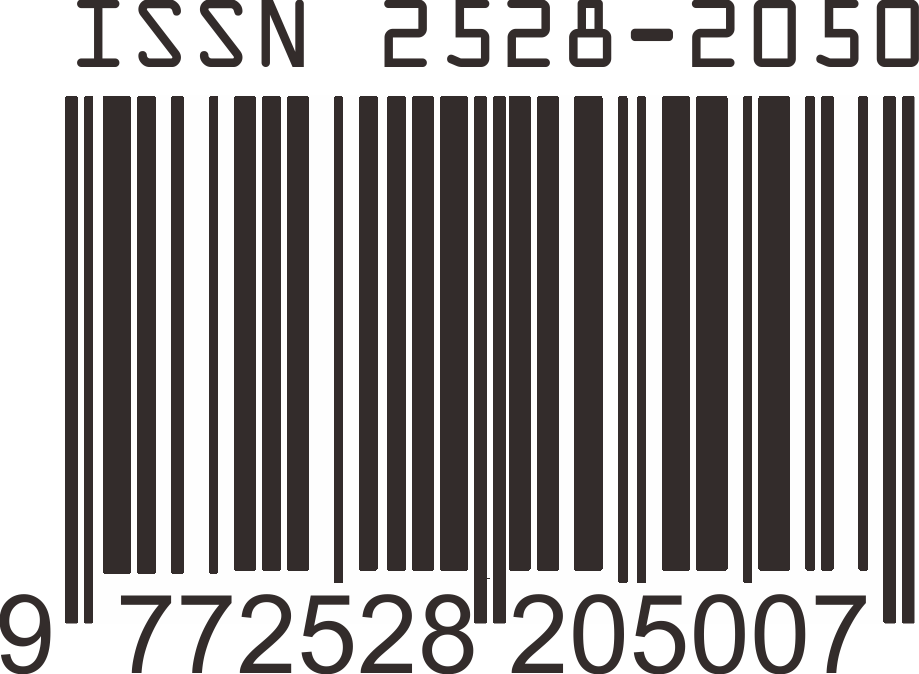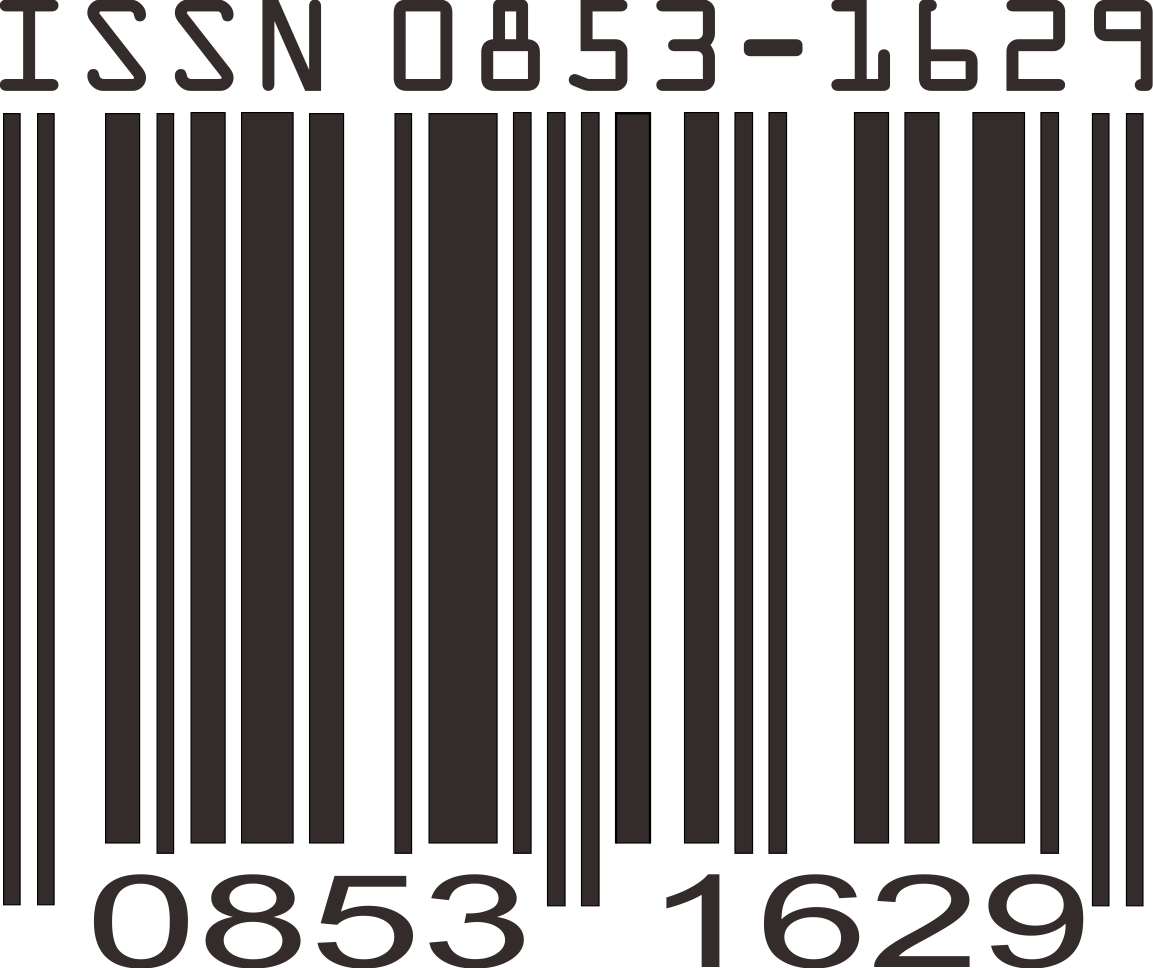Produktivitas Panen Propolis Mentah Lebah Trigona itama Cockerell (Hymenoptera: Apidae) Menggunakan Propolis Trap dan Manipulasi Lingkungan di Riau
Abstrak
Kata Kunci
Teks Lengkap:
PDFReferensi
Baker, R.J.1977. Considerations in selecting sugars for feeding to honey bees. American Bee Journal, 117(2), p: 76–77
Bankova, V., Popova, M., Bogdano, S., and Sabatini, A.G. 2002. Chemical composition of european propolis: expected and unexpected results. Zeitschrift fur Naturforschung C (e-journal), 57(5-6), p. 530-533.
Bankova, V., Popova, M., and Trusheva, B. 2014. Propolis volatile compounds: chemical diversity and biological activity: a review. Chemistry Central Journal. 2, p: 8-28. DOI: 10.1186/1752-153X-8-28
Bogdanov, S. 2016. Propolis: Origine, Production, Composition. Bee Product, Science. [Accessed 5 April 2019]
Borba, R.S and Spivak, M. Propolis envelope in Apis mellifera colonies supports honey bees against the pathogen, Paenibacillus larvae. Scientific reports. 7: 11429. DOI:10.1038/s41598-017-11689-w
Budiaman dan Rahman, A. 2006. Uji efektivitas empat variasi propolis trap terhadap produksi propolis lebah madu Apis mellifera L. Jurnal Perennial, 2(2), p. 1-4
Campbell, N. A., dan J. B. Reece. 2008. Biologi edisi ke 8 jilid 1. (diterjemahkan dari : biology eighth edition, penerjemah : d.t. wulandari). Jakarta: Penerbit Erlangga.
Crane, E. (1980). A book of honey. London: Oxford University Press.
De Jager, A.J., Taylor, G.J., Greeff, P., and Lishman, A.W. 2002. The effect of commercial propolis production on hive profitability. [Accessed 25 Juni 2015].
Drumond, P. M., Bego, L. R. and Melo, G. A. R. 1995. Nest architecture of the stingless bee Plebia poecilochora Moure and Camargo. Biota Neotropica, 13(1), p: 147-152
Erwan and Yanuartati, B. Y. E. 2012. Breeding of Queen Bee and Farm Business Developing as Business Activity at the Beekeepers Group in West Lombok Regency. Faculty of Animal Science University of Mataram Service Community Report.
Eltz, T. 2001. Ecology of stingless bee (apidae, meliponini) in lowland dipterocarp forest in sabah, malaysia, and an evaluation of logging impact on populations and communities. Dissertation Doktorgrades, Universtat Wurzburg. Munchen.
Fokt, H., Pereira, A., Ferreira, A.M., Cunha, A., and Aguiar, A. 2010. How do bees prevent hive infections? The antimicrobial properties of propolis. Current Research, Technology and Education Topics in Applied Microbiology and Microbial Biotechnology. [Accessed 5 April 2019]
Hasan, Z., Artika, I.M., Fatoni, A., Kuswandi, dan Haryanto, B. 2011. Antibacterial activity of propolis Trigona spp. from Bukittinggi West Sumatera against Salmonella sp. Chemical Program, 4(2), p: 55-59.
Huang, S., Zhang, C.P., Wang, K., Li, G.Q., and Hu, F.L. 2014. Recent advances in the chemical composition of propolis. Molecules, 19, p: 19610-19632, DOI:10.3390/molecules191219610
Ibrahim, N., Zakaria, A. J., Ismail, Z. and Mohd, K. S. 2016. Antibacterial and phenolic pontent of propolis produced by two malaysian stingless bees, Heterotrigona itama and Geniotrigona thoracica. International Journal of Pharmacognosy and Phytochemical Research, 8(1), p: 156-161
Isidorov, V. A., Bakier, S., Pirożnikow, E. Zambrzycka, M. dan Swiecicka, I. 2016. Selective behaviour of honeybees in acquiring european propolis plant precursors. Journal of Chemistry Ecology, 42, p: 475–485
Ivancajic, S. Mileusnic, I., and Milosevic, C, M. 2010. In vitro bacterial activity of propolis extracts on 12 different bacteria in conditions of 3 various pH values. Archives of Biological Sciences, 62 (4), p: 915-934
Kleinschmidt, G.J. and Kondos, A.C. 1976. The influence of crude protein levels on colony production. Australian Beekeeping, 80, p: 251-257.
Kovac, H. and Anton, S. 2011. Thermoregulation of foraging honeybees on flowering plants: Seasonal variability and influence of radiative heat gain. Ecological entomology, 36, p: 686-699, DOI: 10.1111/j.1365-2311.2011.01313.x.
Kofi, K.P., Aido, K., Combey, R., and Karikari, R. 2010. Stingless bees: importance, management and utilisation: a training manual for stingless bee keeping. London: Unimax Macmillan.
Popova, M., Dimitrova. R., Al-Lawati, H. T., Tsvetkova, I., Najdenski, H. dan Bankova, V. 2013. Omani propolis: chemical profiling, antibacterial activity and new propolis plant sources. Chemistry Central Journal, 7, p: 1-8
Ricigliano, V., Mott, B.M., Floyd, A.S., Copeland, D.C, Carroll, M. J and Anderson, K.E. Honey bees overwintering in a southern climate: longitudinal efects of nutrition and queen age on colony-level molecular physiology and performance. Scientific Reports, 8:10475, DOI:10.1038/s41598-018-28732-z
Maurizio, A. (1975). How bees make honey dalam Crane, E (ed): Honey, A Comprehensive survey, Chapter Z. London: Heinemann.
Mello, B.C.B.S. and Hubinger, M.D. 2012 Antioxidant activity and polyphenol contents in Brazilian green propolis extracts prepared with the use of ethanol and water as solvents in different pH values. International Journal of Food Science Technology, 47, p: 2510–2518.
Michener, C.D. 2007. The Bees of the world. 2nd editions. Baltimore: The Johns Hopkins University Press.
Michener, C.D. 2013. The Meliponini. In: Pot-honey: a Legacy of Stingless Bees (Eds. P. Vit, S. R. M. Pedro and D. W. Roubik). New York: Springer. pp. 1-17.
Nakajima, Y., Tsuruma, K., Shimazawa, M., Mishima.S., Hara, H. (2009). Comparison of bee products pased on assays of antioxidant capacities. BMC Complementary and Alternative Medicine (e-journal), DOI: 10.1186/1472-6882-9-4
Pujirahayu, N., Ritonga, H., Agustina, S. dan Uslinawaty, Z. 2015. Antibacterial activity of oil extract of Trigona propolis. International Journal of Pharmacy and Pharmaceutical Sciences, 7 (6), p: 419-422
Purnomo, Pribadi, A., Janneta, S., dan Suhendar. 2012. Tehnik produksi raw propolis lebah Trigona itama dengan modifikasi kotak dan lingkungan. Laporan Hasil Penelitian BPTSTH Kuok (tidak dipublikasikan).
Purnomo, Pribadi, A., Janneta, S., dan Suhendar. (2013). Tehnik Pengolahan Propolis dan Bee tepung sari Lebah Trigona spp. Laporan Hasil Penelitian BPTSTH Kuok (tidak dipublikasikan).
Rosyidi, D., Radiati, L.E., Minarti, S., Mustakim, Susilo, Jaya, F., dan Azis, A. 2018. Perbandingan sifat antioksidan propolis pada dua jenis lebah (Apis mellifera dan Trigona sp.) di Mojokerto dan Batu, Jawa timur, Indonesia. Jurnal Ilmu dan Teknologi Hasil Ternak, 13(2), p: 108-117
Sahinler, N. and Gul, A. 2005. The Effects of propolis methods and honeybee genotypes on propolis yield. Pakistan Journal of Biological Sciences, 8(9), p: 1212-1214.
Salatino, A., Teixera, E.W., Negri, G., Dejair. 2005. Origin and chemical variation of Brazilian propolis. London: Oxford University Press.
Salatino, A dan Salatino, M. L. S. 2017. Why do honeybees exploit so few plant species as propolis sources?. MOJ Food Processing & Technology, 4(5), p: 158-160
Salatnaya dan Hearty. 2012. Productivity of Trigona spp. as a propolis producer at monoculture and policulture nutmeg plantation in east java. (online), . [accessed 15 Mei 2015]
Sawaya, A. C.H.F., Calado, J.C.P. dos Santos, L.C., Marcucci, M.C., Akatsu, I.P., Soares, A.E.E., Abdelnur, P.V., Cunha, I.B.S and Eberlin, M.N. 2009. Composition and antioxidant activity of propolis from three species of Scaptotrigona stingless bees. Journal of Apiproduct and Apimedical Science, 1 (2), p: 37 – 42, DOI 10.3896/IBRA.4.01.2.03
Singh, S. 1962. Beekeeping in India. New Delhi: Indian Council of Agricultural Research
Somerville, D.C. 2001. Nutritional value of bee collected tepung saris. New South Wales: Rural Industries Research and Development Corporation.
Somerville, D. 2005. Fat Bees Skinny Bees; a manual on honey bee nutrition for beekeepers. New South Wales: Union Offset.
Wongsiri, S and Tangkanasing. 1987. Apis cerana F. beekeeping in Thailand. Bangkok: Unit Chulalongkom University.
Woyke, J. 1976. Brood rearing eficiency and absconding in Indian honeybees. Journal of Apicultural Research (e-journal). [Accessed 5 April 2019]
Article Reads
Total: 6212 Abstrak: 1558 PDF: 4651Article Metrics
Metrics powered by PLOS ALM
Refbacks
- Saat ini tidak ada refbacks.
Laman ini dikelola oleh:
Bio Publisher
The Faculty of Biology Publishing
Laman ini dikelola oleh:
Penerbitan Fakultas Biologi
Universitas Jenderal Soedirman
Jalan dr. Suparno 63 Grendeng
Purwokerto 53122
Telepon: +62-281-625865
Email: biologi@unsoed.ac.id
Laman ini menggunakan:
OJS | Open Journal System
Software pengelolaan jurnal ilmiah online. Versi yang digunakan adalah 2.4.8.0.
Metadata artikel terdaftar di:
Crossref
Agen resmi internasional pendaftaran Digital Object Identifier (DOI)
Artikel jurnal ini terindeks:









